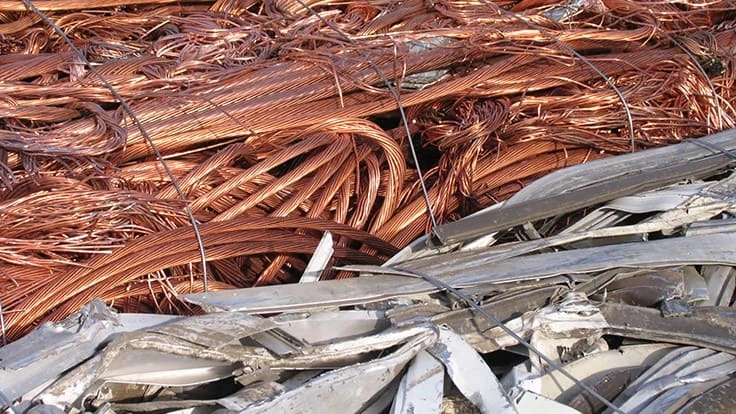
While nonferrous scrap continues to flow into yards across the U.S., the volatile nature of copper and aluminum pricing is drawing more material out on the days when prices increase, sources say.
Chad Kripke, president of Kripke Enterprises Inc., a Toledo, Ohio, brokerage firm that specializes in aluminum scrap, says material is flowing well, with generation being on par with his expectations as of late July. “With the volatility of the market, I think it draws out more volume on certain days naturally,” he says.
“The market is strong, and that is driving a lot of volume,” Kripke adds.
Scrap demand from primary aluminum mills is stronger than secondary mill demand, he says, which has been the case for much of this year. The ongoing semiconductor chip shortage is contributing to this trend, Kripke says.
A trader for a scrap processing company with locations in the Midwest and Southeast also mentions the ongoing chip shortage and its effect on domestic secondary aluminum smelters. “On the secondary side, demand has been pretty bad,” he says. This has allowed overseas buyers to be competitive on these scrap grades.
“[W]hen the markets really shoot up, it brings in additional tons. People hold back when the price falls because they believe it will go back up.” -- a trader for a scrap processing company with locations in the Midwest and Southeast says of red metal scrap
The trader says he thinks the transition to electric vehicles, which is happening more rapidly than previously expected, will further affect scrap demand from secondary aluminum smelters and the mix of scrap that is sought.
Kripke notes that some aluminum scrap grades, such as painted siding, mixed low-copper clips and radiators, are purchased by secondary smelters as well as by continuous casting mills. “Sometimes they compete for units, and a strong appetite from the continuous cast sheet mills sometimes drives up secondary prices,” he says. “And, on the flip side, if there’s a diminished appetite for secondary scrap in the U.S., it will tend to drive down the value of some of the items that some of the continuous cast sheet mills will accept because they know it’s a buying opportunity.”
Demand from aluminum sheet mills for 6000-series scrap is strong, with the trader for the scrap processing company saying mills are buying “everything they can get their hands on.”
Extrusion grades also remain in strong demand, he says, noting that prompt deliveries are readily available with consumers. Spreads also are good, the trader says. “With extrusion grades and the Midwest premium being so high, there is an opportunity to buy scrap into this country.”
While he says red metal scrap is flowing relatively steadily, “when the markets really shoot up, it brings in additional tons. People hold back when the price falls because they believe it will go back up.”
Domestic demand, however, is muted. “Domestic copper mills have very limited demand, and there is a lot of metal out there,” the trader says. Consumers are “taking care of the people who have been feeding them,” but they are not aggressively buying scrap, he adds.
He also mentions the backwardation in London Metal Exchange (LME) and Comex copper contracts and the arbitrage that developed between them in July.
According to Fastmarkets AMM, “On July 26, the Comex active (September) contract traded at more than $300 per [metric ton] above London Metal Exchange price levels for the month to date, in what was a record spread between the two contracts.”
The publication adds, “The difference was exacerbated by market participants who were shorting the spread (betting that it would diminish) being compelled to cover their positions. This caused the price to rise through key technical levels on the Comex, according to several market sources who asked for anonymity when speaking to Fastmarkets.”
As of early August, the trader says the situation is “easing back out now, but it was a big challenge for the last couple of weeks for copper.”
Latest from Recycling Today
- Orion ramping up Rocky Mountain Steel rail line
- Proposed bill would provide ‘regulatory clarity’ for chemical recycling
- Alberta Ag-Plastic pilot program continues, expands with renewed funding
- ReMA urges open intra-North American scrap trade
- Axium awarded by regional organization
- Update: China to introduce steel export quotas
- Thyssenkrupp idles capacity in Europe
- Phoenix Technologies closes Ohio rPET facility





